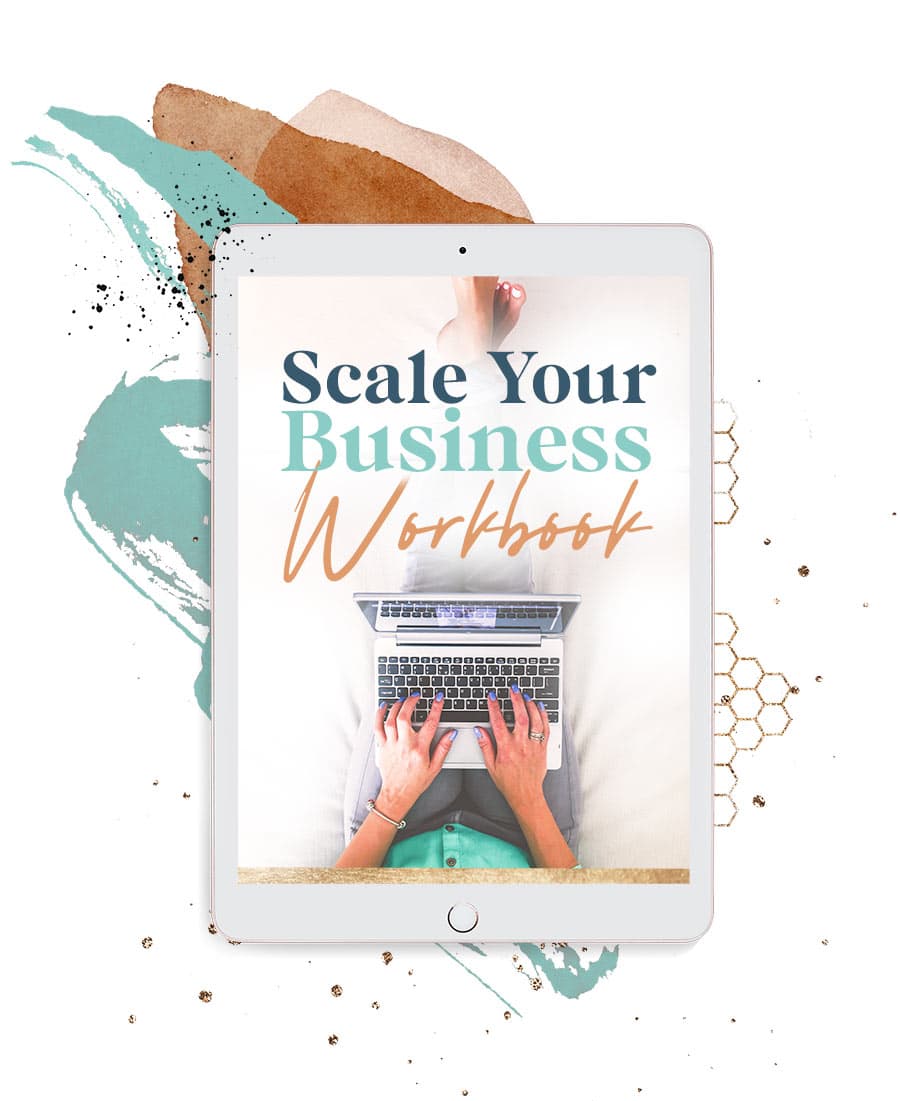You’ve crafted an offer you just know your people are going to love. The only problem? You don’t know how to get it in front of (enough) right people who are ready to pay for your expertise.
Enter, the free challenge.
A free challenge is a fun, effective way to boost your sales in the short-term and explode your email list (and potential future clients and customers) in the long-run.
Free challenges have lots of benefits: they attract super hot leads (aka people who are very interested in the topic of your offer, right now), provide peeps with a view into your teaching style before they actually purchase from you (which means they’ll have realistic expectations of how you deliver and the transformation they’ll receive), and they can also be a fantastic way to re-engage a dusty email list or dead social media.
If you’ve gone MIA on your audience, (Because of just popping in and asking for them to “buy your new thing,” you’re providing loads of free value and reminding them of how incredible you are upfront.)
Think a free challenge might be right for your next offer launch? Let’s break down how you can use a free challenge to attract super hot leads who are (very, very) likely to say yes to your paid offer:
1) Pick a Relevant (AF) Challenge Topic
Choosing a relevant topic is key. You’ll want to ensure your challenges solves a real problem for your audience – you don’t just want to run a challenge “just because.” You’ll also – perhaps more importantly – want to make sure your challenge topic also ties naturally into whatever paid offer you plan to pitch at the end. Most of the time, the “paid offer” at the end of a challenge is a course rather than a done-for-you or one-on-one service, but not always.
For example, if you’re a copywriter pitching a shiny new sales page service, your challenge topic might be around creating an irresistible offer or coming up with a sexy sales proposition (both key steps that will lead to better results when they do actually hire you for a sales page).
2) Define the Length of Your Challenge
Choosing the right challenge length is also super important. Most successful challenges run from 3-7 days, although the length you choose will vary depending on your topic. So, think about it: How long does your challenge need to be to provide value and solve the problem you promised initially, but still short enough to keep participants engaged and excited? It’s important to really suss this out upfront, because you don’t want people to get bored, distracted or start to feel frustrated because the challenge is “taking too long.
3) Get Clear on the Topics You’ll Share Inside the Challenge
You’ll also want to get clear on exactly what you’ll cover everyday. Just like with length, there’s a sweet spot here. What topics do you absolutely need to cover to get your participants the result you’ve promised? You don’t want to overwhelm them with too much information. Remember, your free challenge is like an appetizer to your main course – the actual paid offer you’ll pitch at the end. You don’t need to try to “cram” it all in.
4) Promote Your Challenge With an Opt-in Landing Page
This is where the “growing your list” part comes in. You’ll want to ensure you’re capturing all your challenge participants email addresses. So, be sure to set up a landing page that requires them to enter this information in order to access the challenge information. (And if you do create something ‘public’ like a Facebook community for the challenge, be sure you include the URL to sign-up – and don’t approve members who haven’t officially signed up.)
As far as where and how to promote your challenge? Obviously, you’ll need to promote your challenge just like you would any paid offer. And in fact, you can do it the way you would a paid offer. You can promote it to your existing email list, post about it on your social media platforms and collaborate with others with similar audiences to share it with their people.
5) Keep Participants Engaged
Getting people signed up for your challenge is definitely half the battle. But the other half is keeping them engaged and excited once inside. You want to make sure people are actually completing the challenge action steps and/or absorbing the information – because that means they’re more likely to see results, and either purchase your paid offer for follow-up support and/or simply share their experience with others (who might then turn into buyers).
How can you keep people engaged? Maybe you offer a Facebook community complete with daily check-ins, or daily emails with the day’s instructions or links/workbooks. Or maybe both! You can also offer a variety of interactive elements throughout the challenge, like Live videos/Q&As/webinars.
6) Strategically Pitch Your Paid Offer
Speaking of webinars, many challenge creators run a live webinar or Q&A on the last day of their challenge to deliver the final content, wrap things up, answer questions and then pitch their offer live, often with a limited time discount for fast action takers (like a 25% discount if they purchase while on the webinar, or shortly after). While you don’t have to do it this way, it does tend to be the most popular format.
That said, you’ve already carved out time to ensure your free challenge leads perfectly into your paid offer, so it’s important not to flub the pitch. My suggestion? Don’t try to “wing it. Instead, come up with a game plan in advance. Take some time to draft an offer pitch, or even add it to a slide deck if you’re creating one. You’ll want to introduce your offer as the natural next step after the challenge. Make sure you explain how it ties into the challenge, and how it will help them continue to expand on the results they’ve already achieved during the challenge.
7) Follow Up
No matter how fantastic your challenge – and your pitch – the reality is not everyone will sign up for your offer right away. And that’s okay! This is why it’s super important that you snagged those email addresses at the very beginning. Once the challenge is over, you can add the participants to your regular email list (as long as this is in accordance with local laws where you are). If you can’t do that, create a follow-up sequence anyway that at least includes a survey, related offers and other resources they might find beneficial. You can also include a link they can click to add themselves to your main list.
A free challenge can dramatically grow your list and lead to a successful offer launch, no matter what type of offer you have on deck. Plus, even if someone doesn’t buy now, a free challenge done right will attract lots of warm leads who are far more likely to turn into buyers in the future.






